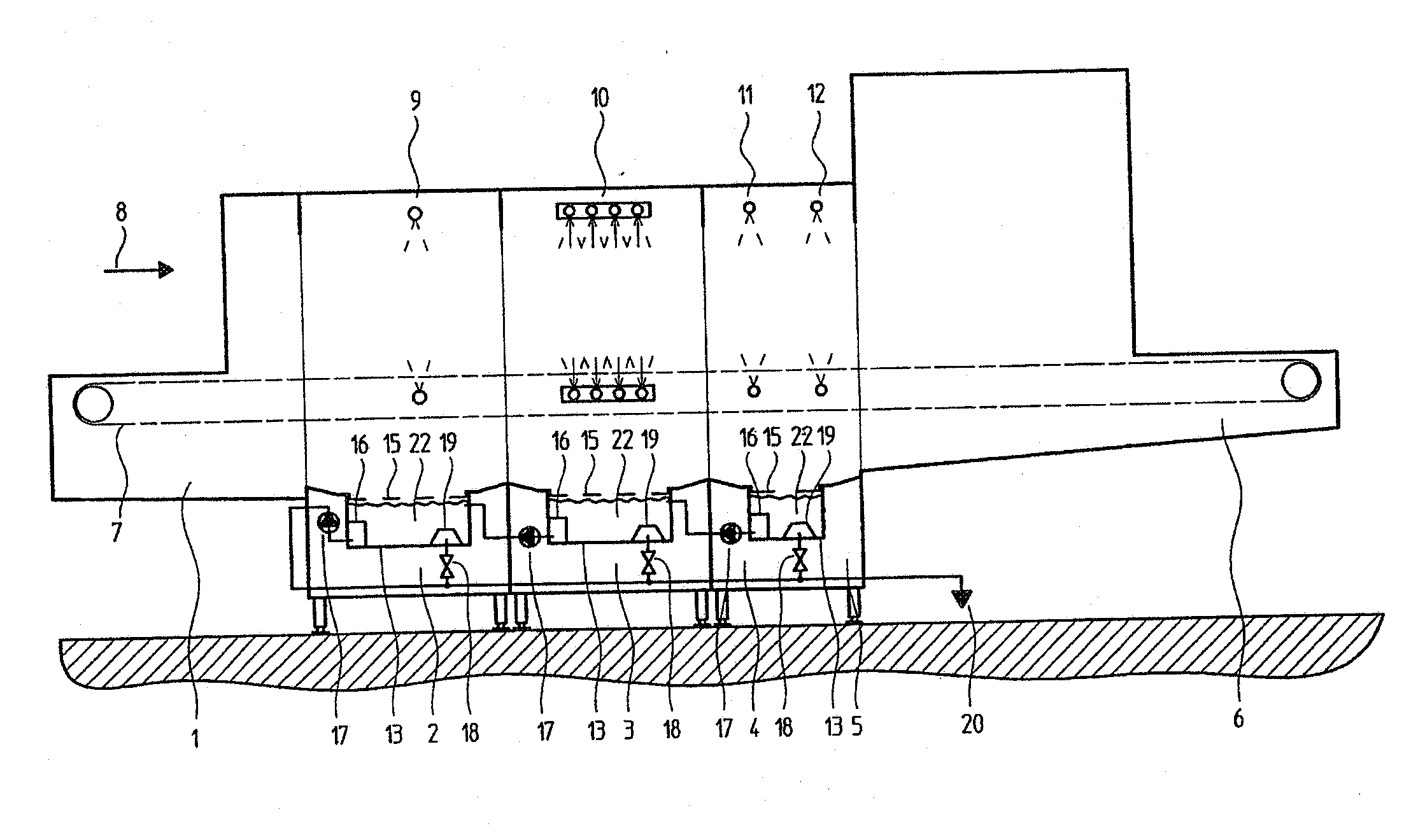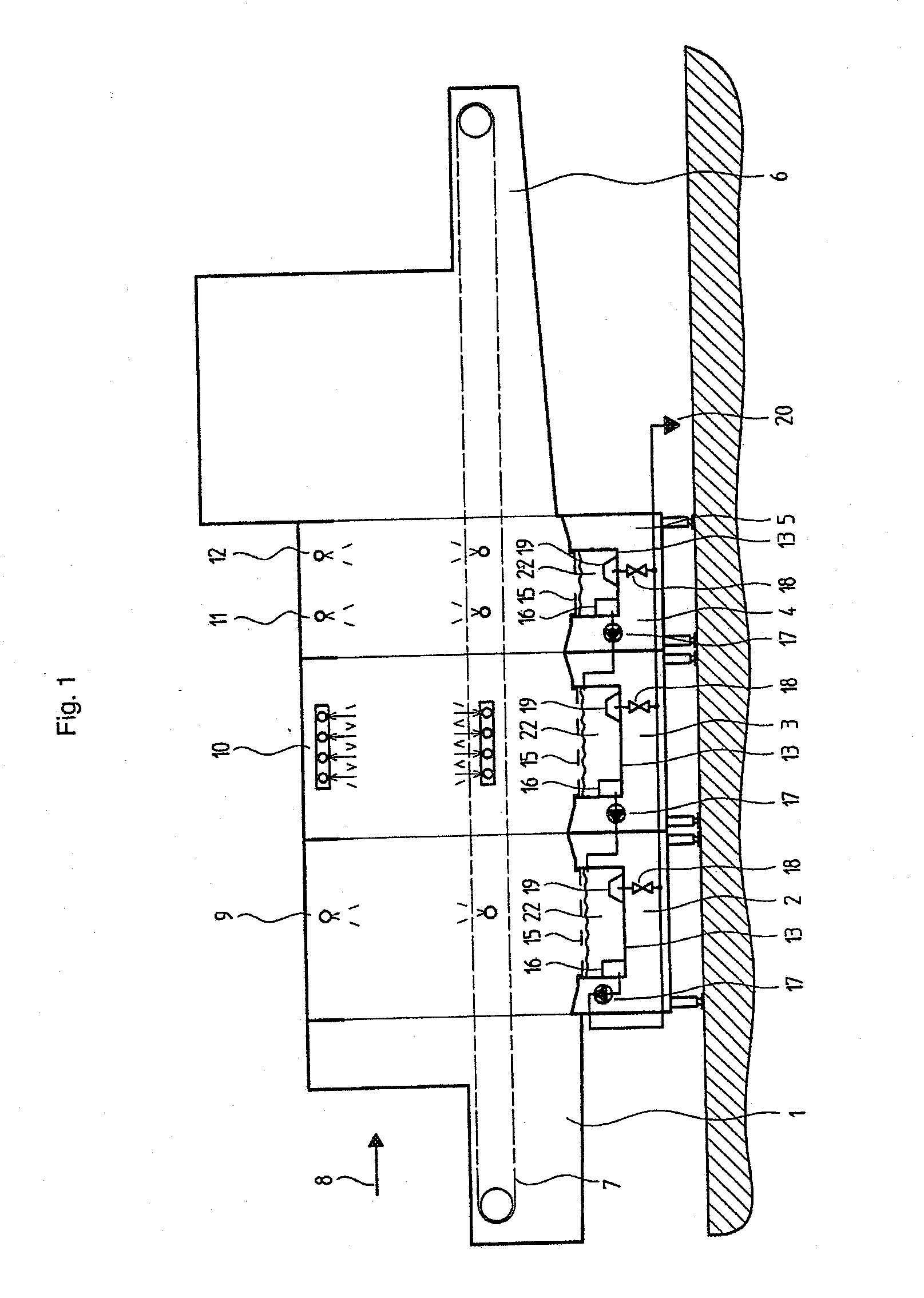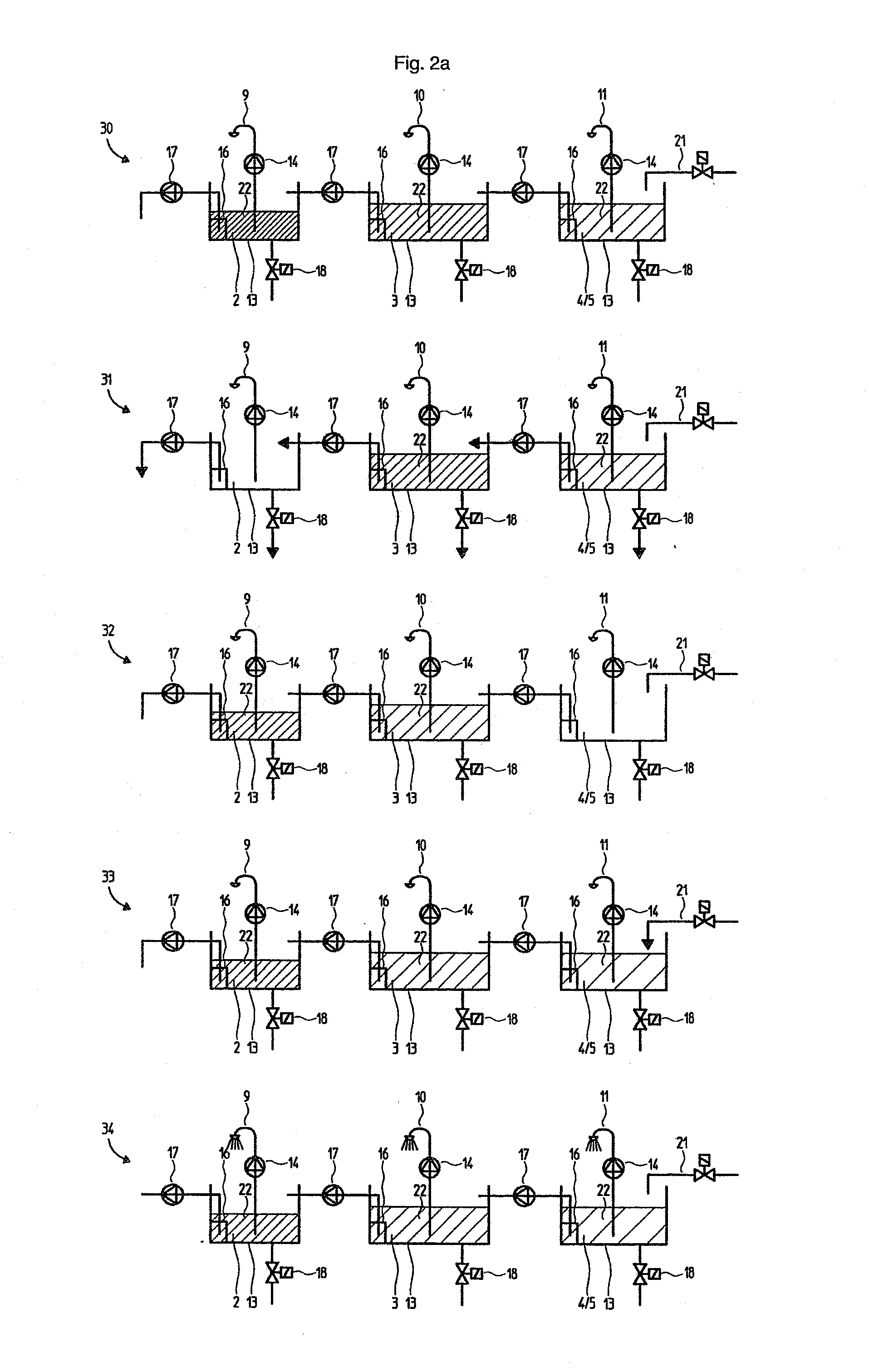Method for self-cleaning of a continuous dishwasher
- Summary
- Abstract
- Description
- Claims
- Application Information
AI Technical Summary
Benefits of technology
Problems solved by technology
Method used
Image
Examples
Embodiment Construction
[0035]The illustration according to FIG. 1 is a schematically represented variant embodiment of a continuous dishwasher proposed in accordance with the invention having a number of storage tanks corresponding to the number of treatment zones. A section in the longitudinal direction of the continuous dishwasher proposed in accordance with the invention may be seen in the illustration according to FIG. 1.
[0036]The continuous dishwasher is shown without items for cleaning; this is generally the situation at the end of the rinsing operation after an operating period. The storage tanks of individual rinsing zones 2, 3 and 4 are filled with soiled cleaning fluid, the degree of soiling of which differs. Furthermore, a transporter 7 for the items to be cleaned is illustrated schematically. In the illustration according to FIG. 1, the transporter 7 is designed by way of example as a conveyor chain. However, other variants of the transporter 7 can also be used. A transporter, in which the ite...
PUM
| Property | Measurement | Unit |
|---|---|---|
| volume | aaaaa | aaaaa |
| time | aaaaa | aaaaa |
| time | aaaaa | aaaaa |
Abstract
Description
Claims
Application Information
 Login to View More
Login to View More - R&D
- Intellectual Property
- Life Sciences
- Materials
- Tech Scout
- Unparalleled Data Quality
- Higher Quality Content
- 60% Fewer Hallucinations
Browse by: Latest US Patents, China's latest patents, Technical Efficacy Thesaurus, Application Domain, Technology Topic, Popular Technical Reports.
© 2025 PatSnap. All rights reserved.Legal|Privacy policy|Modern Slavery Act Transparency Statement|Sitemap|About US| Contact US: help@patsnap.com



